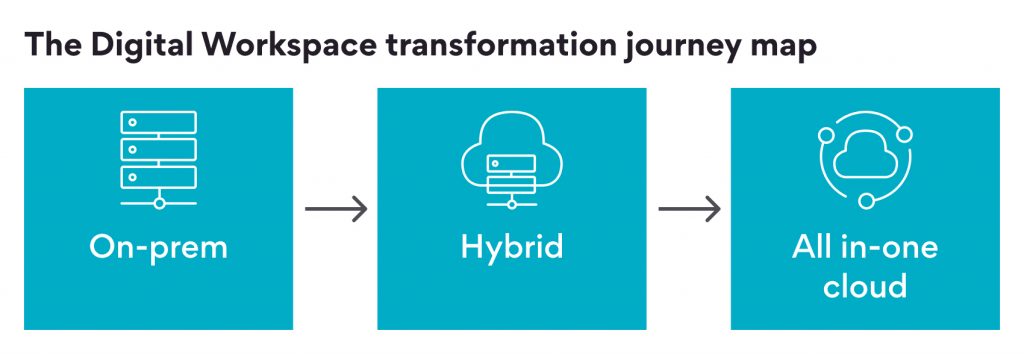There were predictions at the advent of 2020 on growth and expansion of the Media and Entertainment (M&E) industry. Deloitte Global predicted that by the end of 2020, 50% of adults in developed countries will have four or more online-only media subscriptions. Despite global disruption, fixed broadband will reach a billion households in 2020, with unique mobile internet subscribers peaking to 3.4 Bn by the year end. Data consumption is speculated, and rightly so, to see strong growth and consumption via smartphone is expected to witness its largest jump.
COVID-19 has accelerated these predicted growth trends; new habits are being formed and mobile and other digital screens have become the staple for education, entertainment, and news. If we talk about streaming services alone, at the peak of nationwide shelter-in-place orders across the U.S. during the pandemic, the weekly time spent watching connected TVs rose to more than 1 Bn hours. And such high levels of connected TV use is expected to continue in the new normal.
While the pandemic brought a boom in the consumption of media, it has also limited the Media and Entertainment industry’s fuel — the creative and operational workforce of the industry — thus impacting the ability to be agile in a restrictive work climate. It’s not just the audience that is distributed, the creative and production units are too. The creative production teams are locked up in their homes impeding creation and delivery of fresh content, leaving a difficult-to-address gap in the demand and supply chain of the Media and Entertainment industry. Theatres, studios, production houses are shut down. Even in cases where the operations continue, only a few employees are able to operate in an office or a studio supported by colleagues from remote locations. The inability to brainstorm from the same room, see an idea take shape, and execute it is turning out to be one of the weakest links in the supply chain of content in this pandemic.
The impact of the current situation depends on the stage you are in the digital workspace transformation journey

Stage 1: On-prem infrastructure and complicated VPNs
What does it mean to be working on legacy systems?
This system prevents your M&E company from meeting your current workspace needs. Your teams might be spending excessive time trying to access data and connect with their colleagues, thus draining their creative resources. Your IT teams might also be spending significant time to support and troubleshoot the connection issues faced by your teams, thus stifling innovation initiatives.
Stage 2: As many tools for as many use cases you have
What does it mean to be working on hybrid platforms?
Most workers toggle between applications up to 10 times every hour, which means that companies are losing up to 32 days of productive work per employee every year.
It is especially true now. In many cases, companies’ work tools were purchased as a knee-jerk reaction as the pandemic unfolded. As and when a need arose, companies adopted a point solution to address it. The motley of cloud-based and on-prem work tools not just impairs work, but also increases the tool billing.
Stage 3: The all-in-one secure cloud collaboration platform
What does it mean to be working on a secure cloud collaboration platform?
Modern, distributed work mandated by the pandemic needs liberation from disparate, technologically-deficient tools that slow down work. A cloud suite that has tools to address all work use cases at one place saves money otherwise spent on multiple licenses, increases productivity, fosters communication, strengthens security, enables scale, and motivates your teams to get work done, even remotely.
Pausing production is not an option for your Media, Publishing, and Entertainment company
The above statement is always true. Particularly true if you found yourself in stages 1 or 2.
In the beginning of 2020, Ernst and Young conducted a survey of over 350 Media and Entertainment industry leaders across the world and from various sub-industries. About 25% of the leaders said transforming IT systems is critical to achieving their strategic goals. We can positively expect an increase in this number if we re-conduct the study now.
The audience is digitally equipped to consume content. It just follows that the editors, content creators, and producers are taken out of the legacy and hybrid systems and connected in a digital web of work on cloud, no matter what their physical locations.
The question is no more about whether M&E companies need to take the digital route to be in business. The question is how to connect your distributed teams with a coercive digital work platform where work happens the same way it would happen in the office.
And the answer is to upgrade your M&E company to stage 3 in the digital workspace transformation journey map.
It is time to adopt a digital workspace to run efficient behind the scenes at your M&E company
Now, providing a digital workspace on cloud to your creatives and production teams is as important as providing a digital experience to the audience. It is imperative to meet the skyrocketing demand for content and entertainment. You need to enable your talent with a sound cloud workspace platform to help them take their idea to impact and consumer engagement.
A digital workspace is also an opportunity. Cloud technology leads to process efficiency, which in turn will lead to lowering of the gestation period of your content. Your teams will get more creative freedom and time as they won’t be tied up in IT maintenance and unscalable tools. And it secures you against any possible future disruption.
A final thought
If 6 in 10 employees in your company agree to having materials and equipment to do work right, then you could realize an 11% increase in profitability, a 32% reduction in safety incidents, and a 27% improvement in quality.
Imagine the impact of enabling 100% of your employees with the right work tools by upgrading your workspace to cloud in the digital workspace transformation map.






